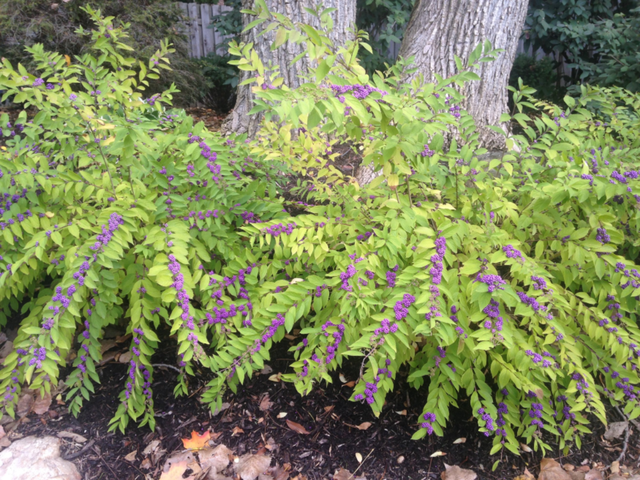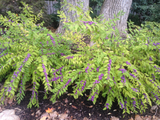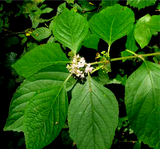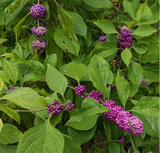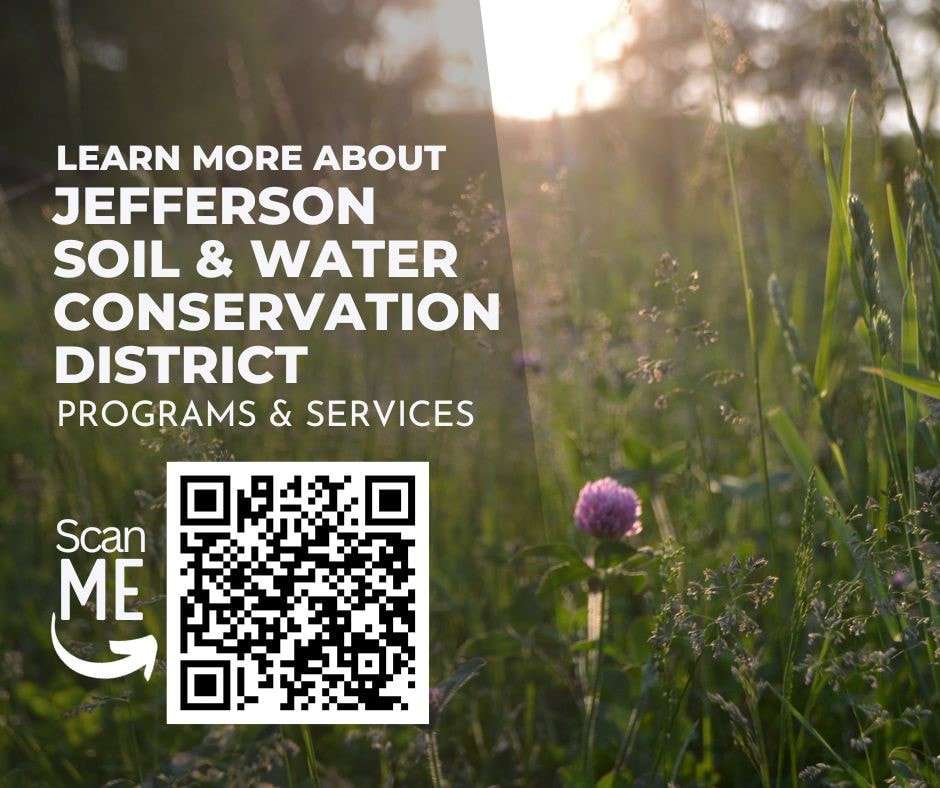- 2024 Native Trees
- >
- Shrubs
- >
- Beautyberry (Callicarpa americana)
Beautyberry (Callicarpa americana)
Height: 3 to 6 feet
Spread: 3 to 6 feet
Bloom Time: June to August
Bloom Description: Lavender, pink
Sun: Full sun to part shade
Suggested Use: Attract Birds, Naturalized areas
Tolerate: Drought and Clay Soils
Native to: Appalachia
In the movie Sunset Boulevard, Norma Desmond played by Gloria Swanson says “ No one ever leaves a star. That’s what makes them a star.” Much like Norma Desmond, the Beautyberry, is a star of landscapes past that can transfix the imagination with its show stopping looks, but fell out of favor when new cheaper and throw away shrubs hit the market.
The Beautyberry is a native to southern Appalachia that is suited well and will grow in the climate of Appalachian Ohio. Which is the top of its range. Some consideration should be taken to plant the shrub in protected areas to limit its exposure to severe cold and blustery winds, as prolonged exposure could result in dieback. However, beautyberry is a wonderful understory shrub that is great for naturalized areas or loose borders with its open and graceful arching branches. The Beautyberry can tolerate a variety of soil types but loves an organic soil rich bed.
The fall is when this phenomenal shrub shines, when it is prolifically covered by magenta berry clusters that form all up and down the branches. It is stated that berry production is best seen when Beautyberry is planted in groupings, but solitary plants still put on a display. It is also recommended to remove the older stems to promote new growth and berry production.
Thomas Jefferson was a huge fan of the Beautyberry and added it to the list of plants to be grown at Monticello. The Beautyberry was first introduced into Ohio by the drovers travelling the Staunton Pike. The drovers placed the leaves of the beautyberry under the harnesses of their horse and oxen teams to repel mosquitoes. The USDA Agricultural Research Service confirmed that two compounds in the leaves, callicarpenal, and intermedeol, act as a mosquito repellant. Whereas, Native Americans used the branches and leaves in a bath to cure rheumatism.
The shrub's clusters of berries are a food source for many songbirds, including the American Robin, Brown Thrasher, Purple Finch, and Eastern Towhee. The berries are also consumed by foxes, opossum, raccoons, and squirrels. Beautyberry is also a host plant for several of the Lepidoptera family, but is most noted as a nectar plant for native bees and honey bees. ■

